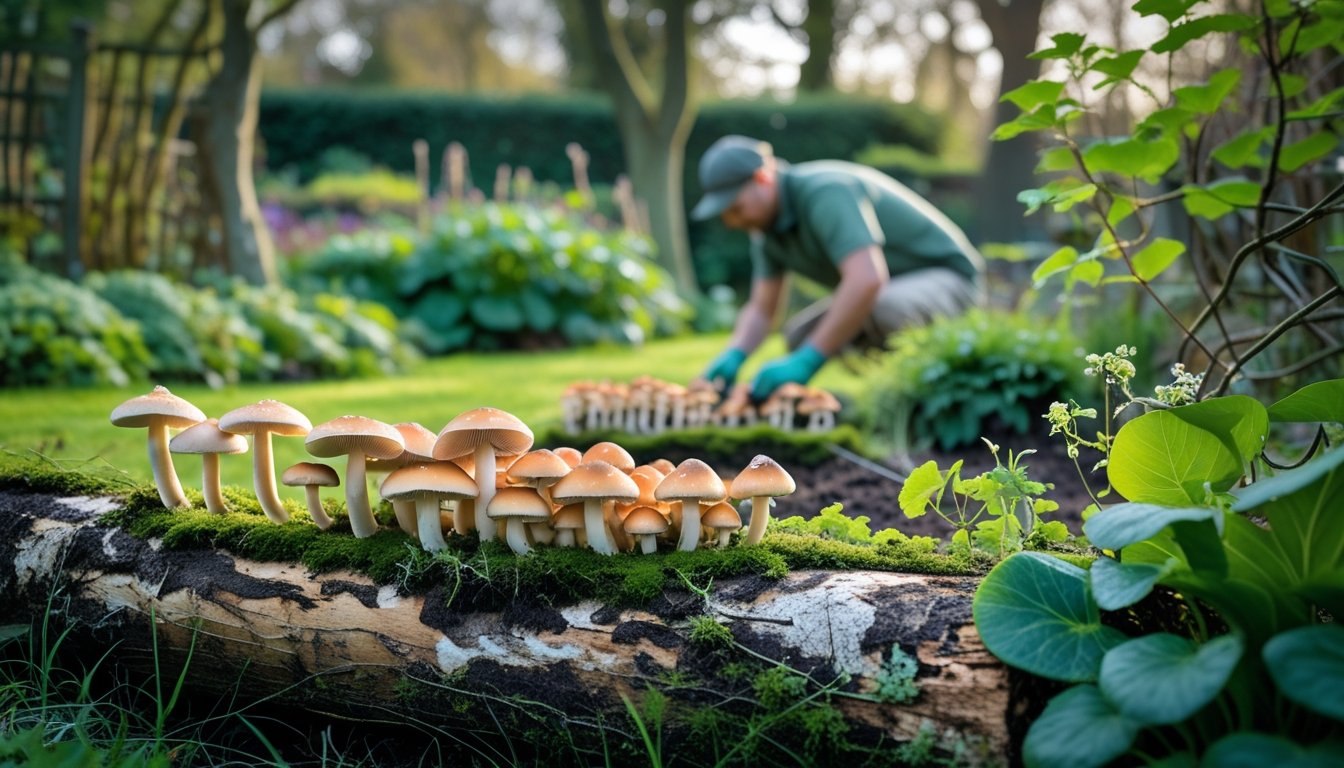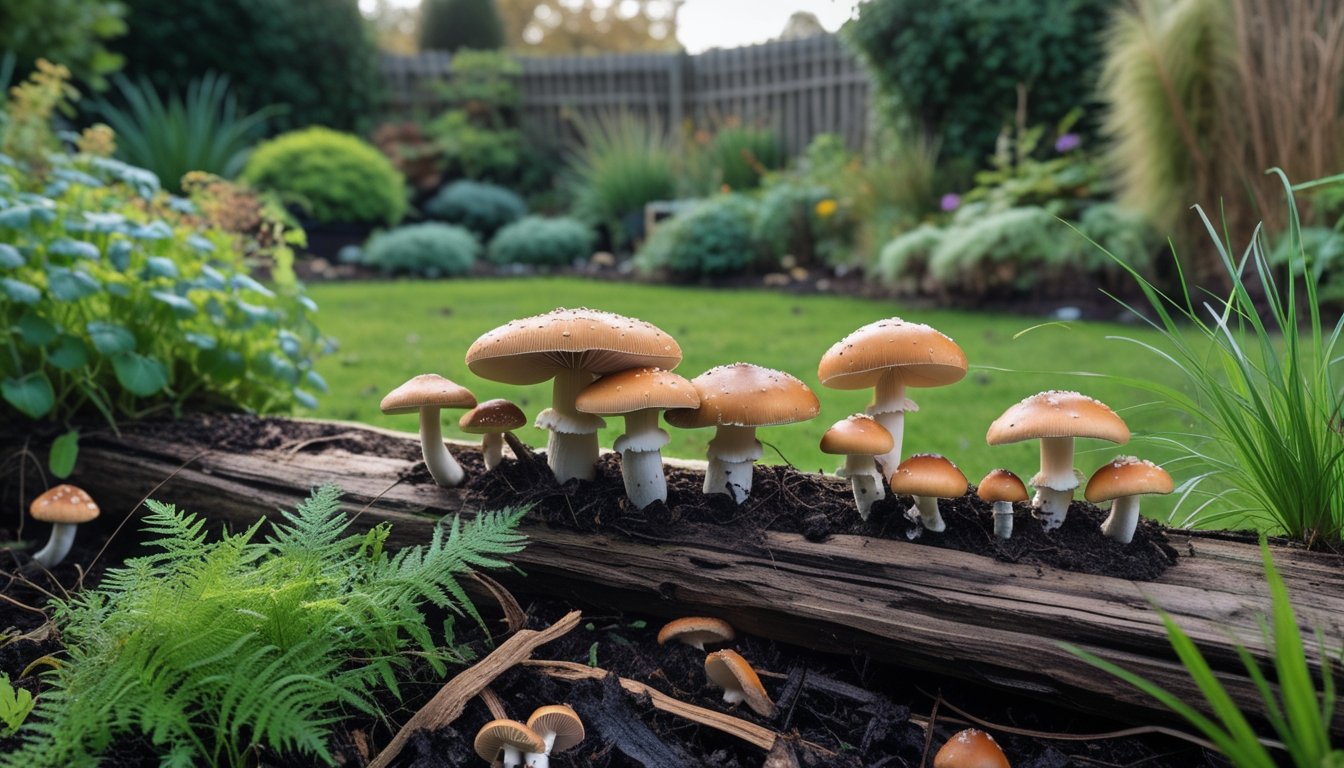Late updated: 08 Nov 2025 12:11
Written by: Emily Thornton
Cultivating Wild Edible Mushrooms in UK Gardens: A Guide for Enthusiasts
Embarking on the journey of cultivating wild edible mushrooms in UK gardens opens a world of culinary and ecological benefits. Whether you're looking to enhance your meals with homegrown, flavoursome varieties or aiming to promote biodiversity in your garden, mushroom cultivation can offer a fulfilling and rewarding experience. Growing your own wild mushrooms is not only a delightful venture for the palate but also a step towards sustainable living in harmony with nature.

Mushroom cultivation is a fascinating way to utilise shaded corners of our gardens, areas that often go neglected. With an array of species such as Shiitake and Oyster mushrooms suitable for UK climates, there is an opportunity to experiment with a range of tastes and textures in our culinary creations. This practice calls for attention to specific conditions, such as humidity and substrate preparation, ensuring healthy growth and a bountiful harvest.
Safety is paramount when foraging or cultivating wild mushrooms. It's essential to correctly identify edible varieties and follow best practices to avoid any risks. This blog post will provide insights into the fundamentals of mushroom growing, and delve into methods, safety measures, and ongoing care that every aspiring mushroom gardener should know.
Key Takeaways
- Growing wild mushrooms enriches culinary experiences and garden ecosystems.
- Proper identification and care are crucial for successful cultivation.
- Mushrooms thrive in shaded, humid areas with the right substrate.
Fundamentals of Cultivating Wild Edible Mushrooms in UK Gardens
Embarking on the journey of cultivating wild edible mushrooms in UK gardens requires an understanding of several key aspects. This includes selecting appropriate mushroom varieties, comprehending their lifecycle, and optimising the garden environment to support their growth.
Choosing Suitable Wild Edible Mushroom Varieties
When choosing wild mushrooms to cultivate, selecting types that thrive in the UK's climate is essential. Oyster mushrooms (Pleurotus spp.) and shiitake mushrooms (Lentinula edodes) are popular options due to their adaptability and culinary appeal. Chicken of the woods (Laetiporus spp.) can also be considered for its unique flavour and texture.
The species you choose should align with your garden's conditions. For instance, oyster mushrooms prefer temperate conditions and decay wood, making them ideal for log-based cultivation. Conversely, certain varieties, like chicken of the woods, can adapt to different substrates, including hardwood trees.
Understanding Mushroom Life Cycle and Mycelium Development
Mycelium is the vegetative part of a mushroom, consisting of a network of fine white filaments, crucial for mushroom growth. Understanding this hidden phase is pivotal for successful cultivation. Mycelium colonises the growth medium and, once fully developed, supports fruitbody formation—the mushrooms we harvest.
Beginning with inoculating the substrate with mushroom spores or spawn, the mycelium grows and spreads. This phase can vary in duration, from several weeks to months, depending on environmental conditions and mushroom type. Maintaining appropriate humidity and temperature is vital to support this development and eventually induce fruiting.
Garden Preparation for Mushroom Cultivation
Preparing the garden involves creating an environment conducive to the selected mushroom's growth requirements. Identifying a shady spot is often necessary, particularly for those preferring less direct sunlight, like oyster and shiitake mushrooms. For these, logs or wood-based substrates are ideal, needing full inoculation before placement.
Soil preparation involves ensuring proper moisture retention without waterlogging. If cultivating mushrooms like chicken of the woods, integrating suitable hardwood logs as part of the landscape may be effective. It's beneficial to regulate moisture through manual watering or drip irrigation to maintain optimal conditions for mycelium development and mushroom fruition.
Methods, Safety, and Ongoing Care for Wild Mushroom Cultivation

Cultivating wild edible mushrooms in the UK requires a thorough approach to methods, safety, and ongoing care. We must consider sourcing and applying spores or spawn, as well as focusing on mushroom identification and safe foraging principles. Maintenance and troubleshooting form the backbone of a successful mushroom cultivation endeavour.
Sourcing and Applying Mushroom Spores or Spawn
When cultivating wild mushrooms, sourcing high-quality spores or spawn is essential. Spores are microscopic reproductive cells, while spawn is a substance with mycelium ready to grow. Both can be obtained from specialised suppliers or foraging courses.
When applying spores or spawn, it's crucial to choose a suitable site with partial shade and adequate moisture. Areas around tree bases or near your garden's vegetables often provide ideal growing conditions. Timing is also key; spring offers a favourable season to begin this process. By carefully layering spawn under organic material and maintaining consistent moisture, we can enhance germination.
Mushroom Identification and Safe Foraging Principles
Proper identification is vital to ensure we are cultivating safe, edible varieties. Utilising field guides or joining local foraging courses can significantly aid in recognising different species. Key features to note include cap shape, gill attachment, and spore print colour.
When foraging, personal safety should always be our top priority. It’s imperative to avoid any mushroom that is difficult to identify or that closely resembles a poisonous species. We recommend double-checking identifications with multiple reliable sources.
Maintenance, Harvesting, and Troubleshooting Tips
Ongoing care involves monitoring moisture levels, ensuring adequate airflow, and managing pests. Mushrooms thrive in environments with consistent humidity. Consequently, watering schedules should aim to maintain a damp, not soaking, substrate.
Harvesting requires gentleness to avoid disturbing nearby growth. Twisting and pulling at the base ensures the collection of mature mushrooms, leaving the mycelium intact. If problems arise, such as signs of disease or insect infestations, implementing prompt solutions is essential. Checking for rotting or changing environmental conditions can often alleviate issues. Being observant and proactive supports healthy growth.
This meticulous care forms the backbone of successful wild mushroom cultivation in our gardens.
Frequently Asked Questions

Cultivating wild edible mushrooms in UK gardens involves creating suitable conditions and utilising effective substrates. Ensuring safety and choosing the right species adapted to the UK's climate are crucial for successful cultivation.
What are the best conditions for growing wild edible mushrooms in a UK garden?
To thrive, mushrooms require a damp and shaded environment, mimicking a forest floor. Consistent moisture levels are crucial, as well as proper air circulation to prevent mould. Temperature control is also essential, with most species preferring cooler conditions.
Which edible wild mushroom species are suitable for cultivation in the UK climate?
Shiitake and Oyster mushrooms adapt well to the UK's climate due to their resilience. Field mushrooms (Agaricus campestris) are also popular, thriving in grassy areas. It is essential to select species that can handle fluctuating weather conditions.
How can you ensure the safety and edibility of mushrooms grown in a garden setting?
Confirm species identity through multiple reliable sources. Consulting with experienced mycologists or joining local foraging groups can also be beneficial. We must never consume unidentified mushrooms, and proper identification is paramount.
What substrates are most effective for cultivating wild mushrooms outdoors in the UK?
Compost, straw, and manure are effective substrates. They provide the necessary nutrients for mushrooms to grow. Using a mix of substrates can enhance growth and yield by offering a variety of nutrients.
How do you protect garden-cultivated wild mushrooms from pests and diseases?
Regular monitoring and maintaining cleanliness in the growing area are vital. Natural deterrents, such as certain companion plants, can help ward off pests. Maintaining optimal humidity and temperature reduces the risk of fungal diseases.
What is the timeline for growing wild edible mushrooms, from spore to harvest, in a UK garden?
The cultivation process typically spans from a few weeks to several months. Initial spore inoculation is followed by colonisation, which can take weeks. Depending on the species, mushrooms may be ready to harvest anywhere from two to twelve months after inoculation.
